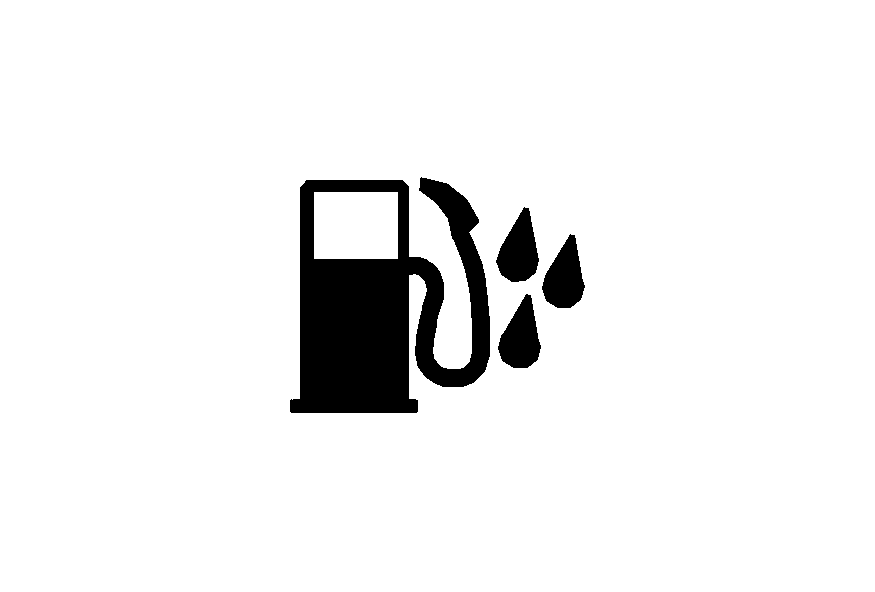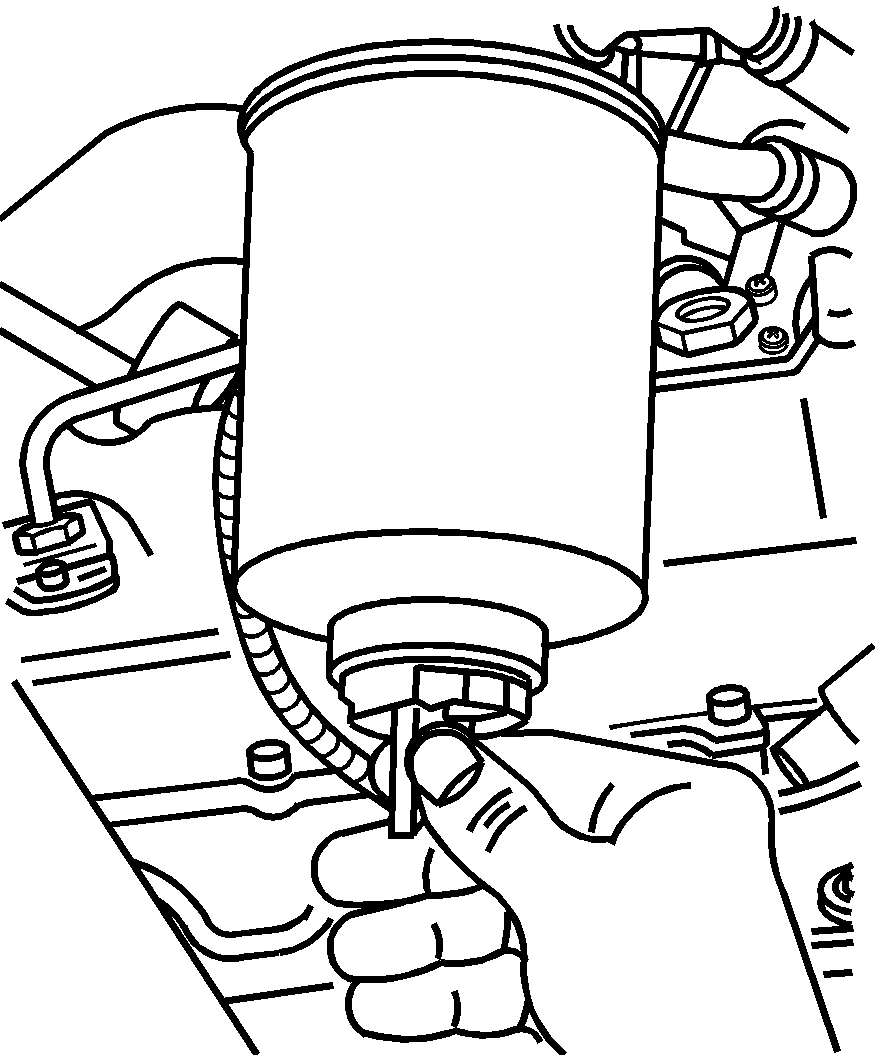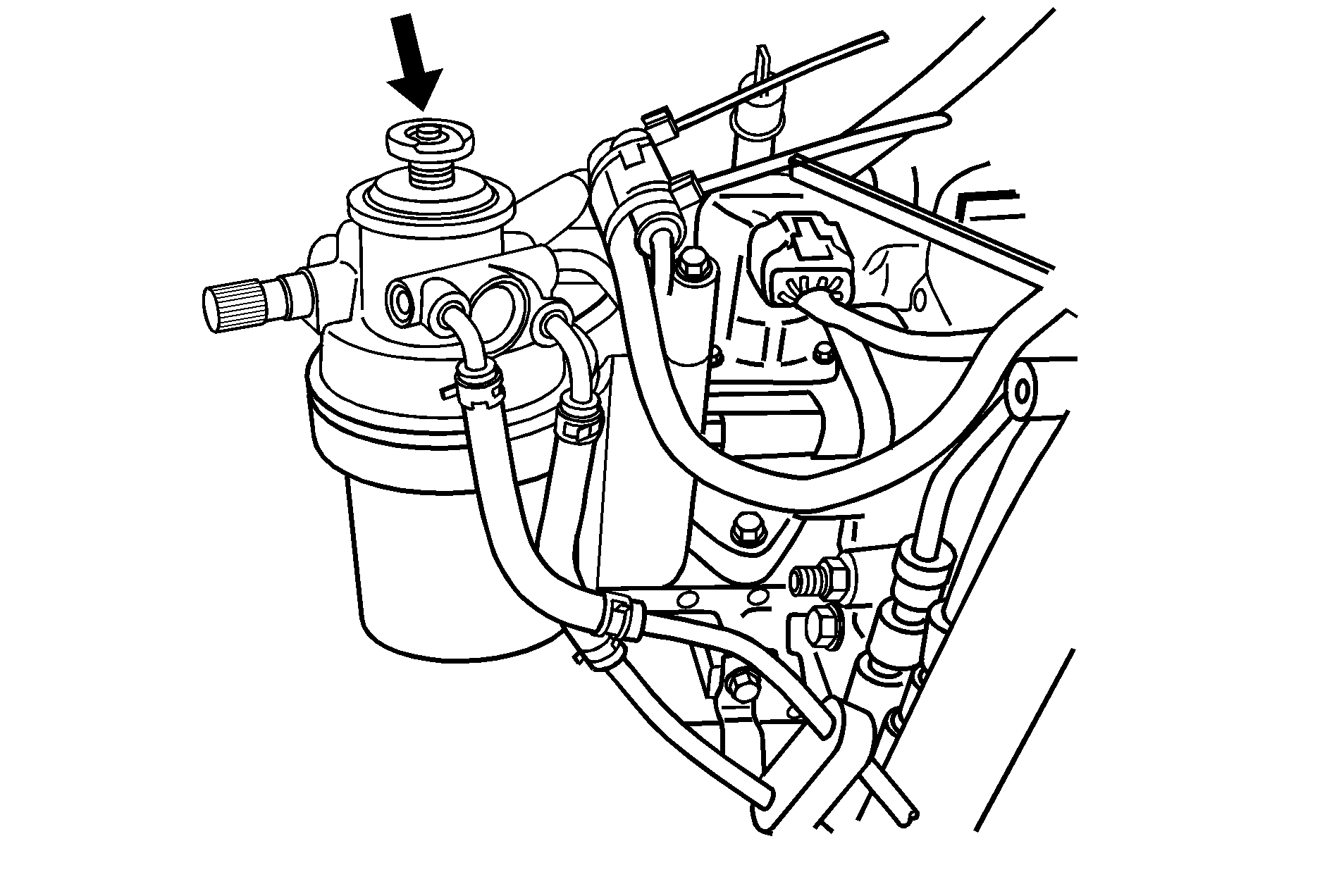Caution: Diesel fuel containing water is still flammable. You could be burned. If you ever try to drain water from your fuel, keep sparks, flames and smoking materials away from the mixture.
Notice: If there is water in the diesel fuel and the weather is warm or humid, fungus and bacteria can grow in the fuel. They can damage the fuel system. A diesel fuel biocide can be used to sterilize the fuel system. However, the fuel system may still need to be cleaned. Your dealer/retailer can advise you of the appropriate solution.
If the fuel tank needs to be purged to remove water, see your dealer/retailer or a qualified technician. Improper purging can damage the fuel system.Sometimes, water can be pumped into your fuel tank along with your diesel fuel. This can happen if a service station does not regularly inspect and clean its fuel tanks, or if it gets contaminated fuel from its suppliers.

If this happens, a water-in-fuel light, if equipped, will come on in the instrument panel. If it does, the water must be drained. Your dealer can show you how to do this.
If the light comes on, use this chart to determine what action to take.
Problem | Recommended Action |
|---|---|
Light comes on intermittently. | Drain water from the fuel filter. |
Light stays on at temperatures above freezing. | Drain the fuel filter immediately. If no water can be drained and the light stays on, see your dealer for assistance. |
Light stays on at temperatures below freezing. | Drain the fuel filter immediately. If no water can be drained, water may be frozen in the water drain system, or in the fuel lines. Move the vehicle to a warm location to thaw out, and then drain the filter system. |
Light stays on immediately after refueling, and a large amount of water was possibly pumped into the fuel tank. | Fuel tank purging is required. See your dealer for assistance. |
Notice: Driving when this warning indicator is on, can damage the fuel injection system and the engine. If the indicator comes on right after a refuel, it means water was pumped into the fuel tank. Turn off the engine immediately. Then, have the water drained at once.
To drain water, do the following:
- Stop and park the vehicle in a safe place. Turn off the engine and apply the parking brake.
- Remove the fuel cap.
- Place a fuel-resistant container under the fuel filter. The filter drain valve is located on the bottom of the fuel filter. The fuel filters are located in the engine compartment on the driver's side of the vehicle, and on the driver's side frame rail near the engine.
- Open the drain valve by turning two to three turns. When fuel empties from the valve, all the water has been drained. Close the valve hand-tight.
- Remove the fuel-resistant container and properly dispose of the contaminated fuel. To find out how to properly dispose of contaminated diesel fuel, see Engine Oil for more information.
- Install the fuel cap.
- Start the engine and let it run for a few minutes. If the engine stalls, the fuel system may need to be primed. While draining the water from the fuel filter, air may enter the fuel system. If air has entered the fuel system the fuel system will need to be primed.

If the water-in-fuel light comes on again after driving a short distance or the engine runs rough or stalls, a large amount of water has probably been pumped into the fuel tank. The fuel tank should be purged.
Fuel Priming
In order for the diesel engine fuel system to work properly, the fuel lines must be full of fuel and contain no air. If air gets into the fuel lines, it will be necessary to prime the fuel lines to eliminate air before operating the vehicle.
Air can get into the fuel lines if any of the following happen:
| • | The vehicle runs out of fuel. |
| • | The fuel filter is removed for servicing or replacement. |
| • | The fuel lines are removed or disconnected for servicing. |
| • | The fuel filter water drain valve is opened while the engine is running. |
If one or more of the above occurred, it is very likely that air has entered your fuel system and that you will need to prime the fuel system before operating the vehicle.
Air in the fuel lines will not harm the engine or the vehicle. However, the engine may not be able to start until the fuel system is primed and the air is removed.
To prime the engine, do the following:
- Make sure there is fuel in the fuel tank.
- Make sure the specified fuel filter is properly installed.
- Make sure the fuel lines are securely connected.
- Make sure the fuel filter is cool to the touch.
- Use a clean cloth to remove dirt and oil from the fuel filter head and breather valve.
- Use the palm of your hand to repeatedly press and release the plunger at the top of the fuel filter priming pump. Continue until the plunger resistance becomes firm. This may take from 20 to 100 times, depending upon fuel tank location.
- Turn the fuel filter breather valve screw counterclockwise several turns to open the breather valve.
- Use the palm of your hand to repeatedly press and release the plunger at the top of the fuel filter priming pump until fuel begins to seep from the breather valve.
- Tighten the fuel filter breather screw to the specified torque, 4.9 N·m (43 in. lbs).
- Use the palm of your hand to press and release the plunger at the top of the fuel filter priming pump about 20 more times. This sends fuel to the engine.
- Use a clean cloth to remove any fuel from the fuel filter and surrounding area.
- Start the engine and allow it to idle for a few minutes.
- Check the fuel filter for leakage.

